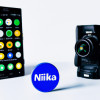
In the digital era where everything is governed by technology, choosing the right operating system for your mobile device can determine your user experience. Here, we will critically examine two of the top operating systems: Google's Android and Nokia's UI platform. We will delve into their unique features, spotlighting the critical aspect of software updates. Who has the edge in terms of offering the latest updates and enhancements? Join us as we dissect these two user interfaces.
Understanding the Basics of Google Android
Google's Android system is a heavyweight in the mobile OS market. It flaunts open-source standards, enabling a plethora of customizations. Furthermore, we will delve into how Google handles software updates, the frequency of these updates, and how they impact the user experience over time.
Unboxing the Features of Nokia User Interface
Nokia has had its share of ups and downs in the smartphone industry, but its unique user interface has remained a significant focus. The platform is characterized by simplicity, ease of navigation, and a lean design approach. We'll take a more in-depth look into Nokia's software update practices, including what they typically involve and how they have evolved.
Comparing Software Updates on Google Android
Among the standout features of the Android platform is its wide-ranging device support. However, this same diversity can lead to a segmented experience in terms of software updates. Factors such as device make and model, carrier specifications, and geography can all affect the rollout of updates on Android. However, Google has made notable strides in recent years to streamline the update process, especially with initiatives like Project Treble and Mainline.
Unveiling Software Update Approach on Nokia UI
Nokia, using a pure rendition of Android known as Android One, promises a streamlined software experience. Pledging up to three years of guaranteed monthly security updates and two years of OS upgrades, Nokia's approach to keeping devices updated is commendable and user-centric. Thus, giving the user a more uniform, predictable, and secure experience over time.
A Comparative Analysis: Android vs Nokia UI
The comparison of Google's Android and Nokia's UI in regards to software updates reveals some stark differences. While Google's Android platform grapples with the issue of fragmentation, Nokia's lean approach offers predictable and consistent updates. On the other hand, Android's open-source nature allows for more flexibility and customization for users who prioritize those features. The decision then becomes a deeply personal one, contingent on what the individual user values more in a mobile OS.
















